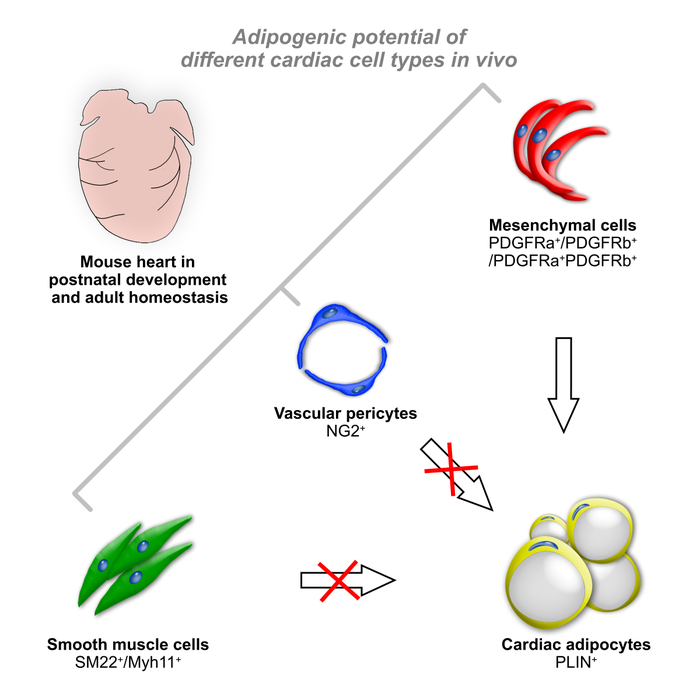Recent studies have associated the aberrant accumulation of adipocytes in the heart with many cardiovascular diseases such as arrhythmogenic right ventricular cardiomyopathy and heart failure. Therefore, understanding the cellular origins of cardiac adipocytes (CAs) has important implications for the treatment of fat-associated cardiovascular diseases.
Recently, a team of scientists led by Professor Zhang Hui from the School of Life Science and Technology (SLST) discovered that CAs originate mainly from PDGFRb+ mesenchymal cells. In undertaking this research, they took advantage of various genetic tools to label different cardiac cell populations and examine their contributions to CAs. They found that both PDGFRa+ and PDGFRb+ mesenchymal cells gave rise to intramyocardial adipocytes, and that PDGFRb+ mesenchymal cells were the major source of intramyocardial adipocytes. On February 2, 2021, their results were published in the journal Cell Reports in an article entitled “PDGFRb+ Mesenchymal Cells, but Not NG2+ Mural Cells, Contribute to Cardiac Fat”.
PDGFRb is a kind of protein often used as the molecular marker for vascular wall cells (pericytes and smooth muscle cells, SMCs). Zhang’s group found that PDGFRb+ cells are heterogenous, as PDGFRb is expressed not only in pericytes and SMCs, but also in some subendocardial, pericapillary or adventitial PDGFRa+ periendothelial fibroblasts. Further studies using the dual-recombinase mediated intersectional genetic lineage tracing technique revealed that PDGFRa+PDGFRb+ double-positive periendothelial fibroblasts contributed to intramyocardial adipocytes. Finally, they analyzed the gene expression profiles of cardiac adipose progenitor cells using single-cell sequencing, and proposed the signaling pathways involved in regulating cardiac adipogenesis.

Figure 1. Diagram of the origin of cardiac adipocytes
In this article, fifth year PhD candidate Jiang Zhen in Zhang’s group was the first author, and Professor Zhang Hui, in collaboration with Professor Liu Chen from Zhongshan Hospital, were the corresponding authors. ShanghaiTech University was the first academic affiliation.
Article link: https://www.cell.com/cell-reports/fulltext/S2211-1247(21)00010-3


